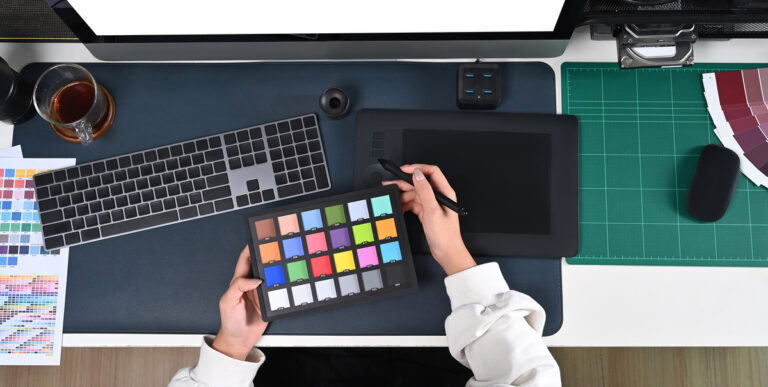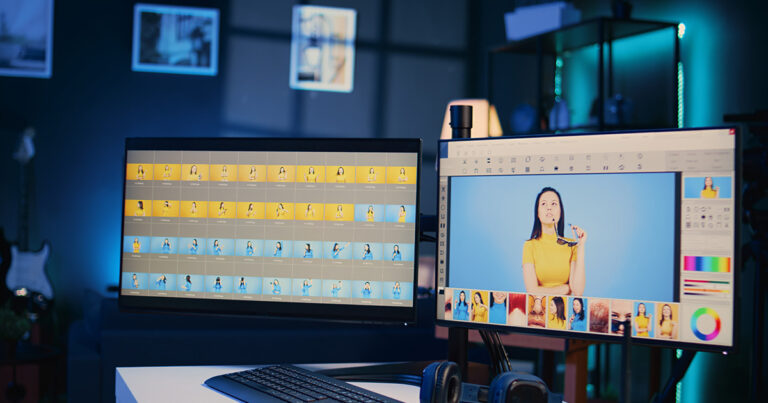It’s a common misconception that humans make decisions based on logical analysis of the options at hand. The truth is that we process information through two parts of the brain — the neocortex and the limbic system — and the factors that move us from inaction to action are less based in thought than you’d expect.
Why does this matter for marketers, particularly marketers who use video? In short, we recognise information in an audiovisual format like video faster than we do text or even images.
If you want to know why it works this way and how it should affect your brand communications, you’re in the right place. First, let’s take a look at what behavioural science has to say on the subject.
Speaking System 1: The Right Language for Marketers
There’s a lot the experts don’t know about neuroscience and behavioural psychology, and they’re discovering more all the time, but we do have a basic understanding of how humans take in information to make decisions.
At a high level, we know that information is processed sequentially in the brain first by the lower system, sometimes called System 1, and second by the higher system in charge of logical reasoning, System 2.
We mentioned the neocortex and limbic system above. Here’s a basic rundown of what each of these systems do.
- The neocortex is the part of the brain that understands language and dense information. It’s highly analytical but also very slow.
- The limbic system, on the other hand, is fast, almost automatic. It’s good at processing audiovisual information and generating emotions like trust or fear to tip us over from feeling to action.
Decisions are made quickly by System 1. It’s only after the decision is made and information is sent to the higher System 2 that we can add reasoning to the choice that we already made.
Think about it. If there’s an earth-shattering roar nearby in the forest, do you want to evaluate the various sounds of animals you’ve learned to identify which it may be? Or do you want to run? Don’t worry. Long before you could finish that sentence, your limbic system already made the decision for you — you want to run.
This idea of our dual-system brain is covered in-depth by Nobel prize-winning psychologist Daniel Kahneman in his bestseller “Thinking, Fast and Slow.” The Decision Lab also has a great overview of it if you want to read more.
Turns out, we’re actually pretty good at making decisions designed to keep us alive and help us understand who is friend or foe. We can instantly interpret through body language if someone is likely to be a threat to us. There’s a reason that 55% of communication is nonverbal — and that jumps to 93% if you include voice inflection and tone, leaving a mere 7% for the words themselves.
Feelings and Decisions Go Hand-in-Hand
Given the influence that feelings have over our decision-making behaviour, it’s no surprise that marketers are constantly striving to tap into consumers’ emotions. This subliminal level of distinction becomes especially important when someone is selecting between comparable items.
Nike is a master of emotion-driven marketing. They partner with role models like Serena Williams to focus on a message of empowerment. They use language like “overcome” and “unlimited” and “Find Your Greatness” to evoke themes of success and achievement. You see athletes (like Sabrina Ionescu, below), inspirational words and vivid colors throughout their ads and content marketing.
But where they really shine is video content. Compare the visual above with the video below. While the title, “Never Settle, Never Done” has the same uplifting tone as many other campaigns, the audiovisual format draws you in in a way that a static image can’t.
The message is clear. It just takes drive to achieve your best, and the subtext, that Nike gear can help you get there, is reinforced with branding and not too overt product placement. It’s a tried and true advertising formula that’s worked for decades, but video ratchets it up several notches by connecting to System 1 of the brain.
Bonus: You might have noticed the soundtrack playing with this video. If you’re curious about music and marketing, check out our blog on how music affects emotions and sales.
Using Video for Deeper Engagement
With emotions leading the way to decisions, and video sparking emotions, you can see the connection between consumers watching a video and taking action.
Even switching from text to images as a means of communication is a big improvement. One study by MIT found we can process images after just 13 milliseconds. Other research found that information is 70% more memorable when combined with visuals and actions (like those you can show in a video). This isn’t surprising when you consider that we’ve been using written words for only a few thousand years, and much of the world wasn’t even literate until a few centuries ago. Our brains are hardwired to absorb and process visual data.
But video can communicate much more than a single image, while tapping into System 1 thanks to the audiovisual format.
To be effective, video doesn’t rely on an abundance of text to convey complex ideas. Instead, it engages viewers with a dynamic yet simple audiovisual experience. It also allows for the subtlety of communication emotion, allowing the opportunity to build trust with the viewer, driving retention and deeper engagement.
This is easier to show than explain. Here’s an example of a video a pension provider used to show their members what was in their statement.
Now, pension statements are complex documents. They’re not easy to comprehend unless you’re savvy on the subject. But this video, as you can see, is much more accessible, particularly important in the financial services industry where clear communication supports transparency.
Data-driven pension videos like the one above drive real action. In one campaign, watching a video made customers 4x more likely to change their contributions.
Here’s another example, this time from a mortgage company. This video was modified and used by a number of providers to tell customers about their options as their forbearance period came to an end.
Forbearance isn’t an easy topic. If you send customers a PDF or several paragraphs of text about their next steps, they’ll ignore it — and call you, driving up call centre costs. That cost was a serious pain point for companies struggling to communicate with customers during this time.
Video cuts through the noise, making it easy on customers (with their lazy System 2 brain), so they can understand at a glance what they need to know. The video above reduced call centre call volume by as much as 73%.
But It Has To Be Personal
You might have noticed something else about the videos above. They aren’t just audiovisual or concise and easy to follow. They’re also personalised for one person: Peter for pensions, Alex for forbearance.
Peter could see his personalised “flight path” for savings, so he could plan for his future. Data points included his current account value, projected value by a specific retirement age and more. Alex could walk through her video to learn about next steps available, even selecting what she needs to know with video interactivity.
Personalisation is another important tenet in emotional marketing because it allows you to treat people like the individuals they are. It’s also a must for customer communication because each customer needs information relevant to them.
Personalised Video combines both — video and personalisation — leveraging technology so you can use video at scale to reach customers 1:1.
Text vs. Video: The Winner Is…
Of course, companies can still communicate with new customers through a lengthy welcome brochure steeped in jargon. They can still send text-heavy messaging to longtime customers for upselling or retention. And many do. Text is the default because it’s easy.
But as we covered above, that isn’t what customers want. It doesn’t make information easy to understand. It doesn’t build connections and trust. And dense text can often have the opposite of the desired outcome, frustrating and alienating customers, leading to churn.
Instead, learnings from behavioural science tell us that we should connect with people through their emotions, and video lets us do that. Video that’s personalised makes sure the message is relevant. Brands can effectively get to the heart of their message — and the heart of their customers — in 60 seconds with Personalised Video.
This strategy works across industries, from telco to travel, delivering results like 11x sales, 10x engagement and 17x ROI. (Yes, I said 17x ROI. Read the case study covered by MarketingSherpa, a research institute focused on customer-first marketing).
Whether you need to explain a bill, stop churn before renewal or just celebrate your customers, data-driven video can do it. To find out more about how it all works, get in touch.




